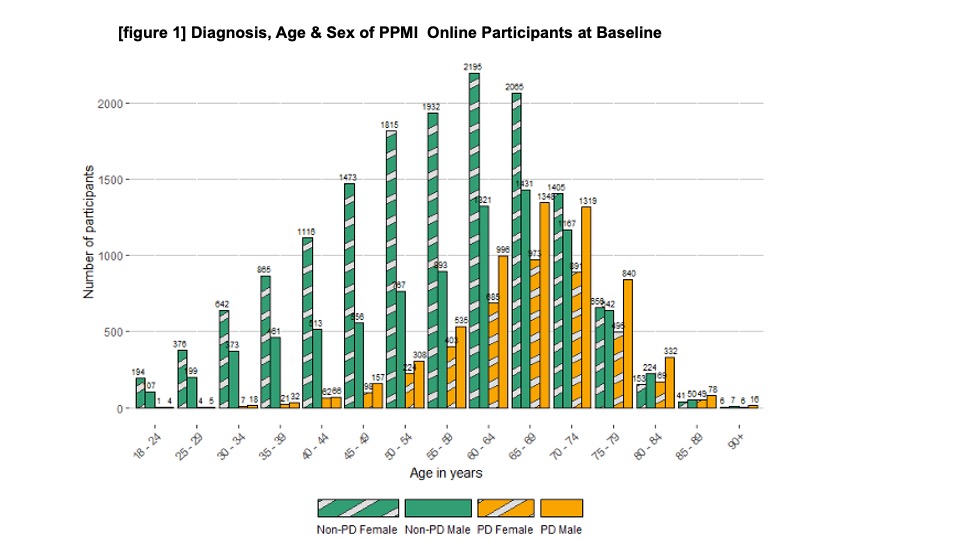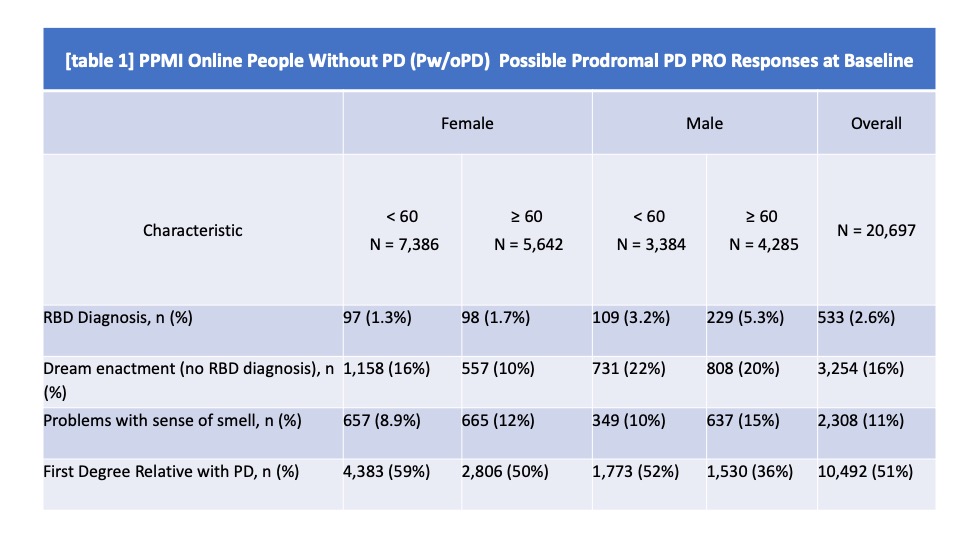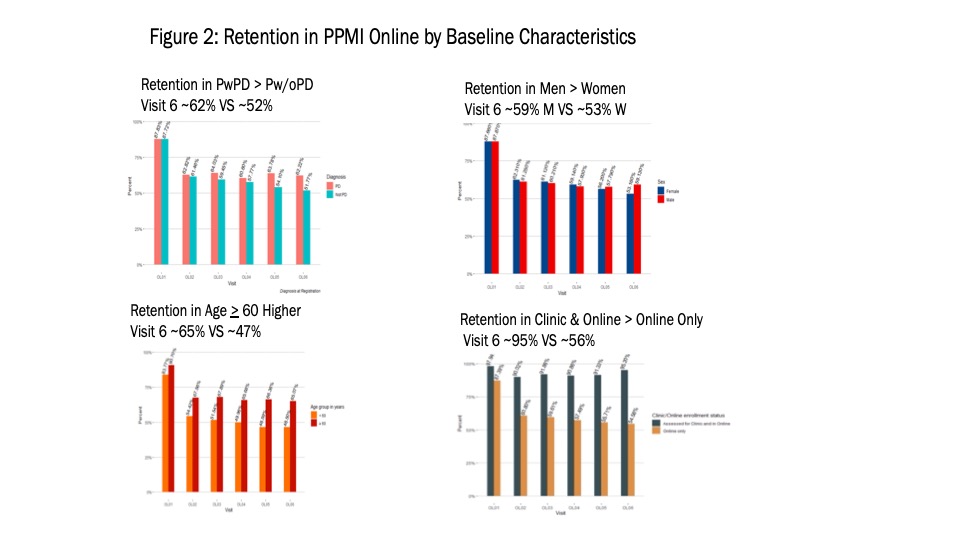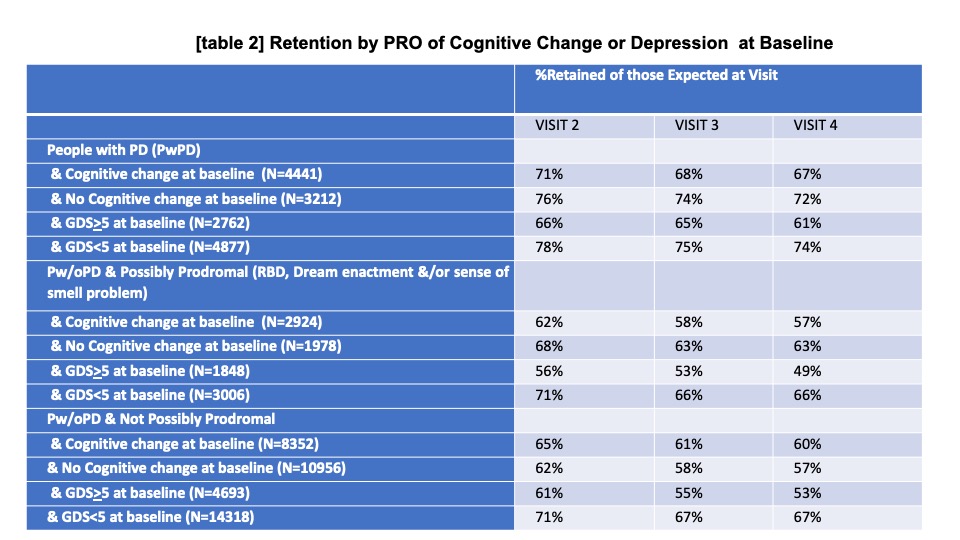Category: Parkinson’s Disease: Clinical Trials
Objective: To describe participants and retention in the longitudinal PPMI Online cohort
Background: The overall PPMI aim of biomarker identification to enable therapeutic development is supported by PPMI Online. Goals include: (1) longitudinal follow-up of people with and without Parkinson’s disease (PD) using participant-reported outcomes (PROs); (2) determining eligibility for additional assessments (e.g., remote: olfactory, genetic or cognitive testing; in-person: imaging, exam, biomarker assessments) and (3) supplementing in-person assessments with longitudinal PROs.
Method: USA residents aged > 18 complete PROs quarterly including assessments of motor function, mood, cognition, other nonmotor features, quality of life, family history health history and risk factors. Online data are linked to data collected elsewhere in PPMI (e.g., olfactory and cognitive testing, imaging, in-person assessments). Retention was calculated by visit and by characteristics at enrollment. Enrollment is ongoing. De-identified data are available to the research community [1].
Results: As of 3/6/23, 33,787 people (10,142 PD, mean age 67; 23,645 not PD, mean age 57) enrolled [figure 1]. Participants were from all 50 states. 96% were white, not Hispanic. 754 (7.4%) of people with PD (PwPD) met eligibility criteria and were referred for possible in-person clinical assessments. Eligible people without PD (Pw/oPD) were referred for remote olfactory testing, and some for dopamine transporter imaging. Of Pw/oPD, 51% had a 1o relative with PD. 5,178 Pw/oPD endorsed RBD (2.6%), dream enactment (16%) and/or problems with sense of smell (11%) (i.e., possible prodromal PD) [table 1]. Retention at 18 months (Visit 6) was higher in those aged > 60, men, persons also enrolled in the PPMI clinical study, and PwPD [figure 2]. Among Pw/oPD, retention was highest in those with an RBD diagnosis (63%) or a 1o relative with PD (63%). 2,762 PwPD and 4,693 Pw/oPD had baseline GDS scores >5, consistent with clinically-significant depression, associated with lower retention [table 2].
Conclusion: PPMI Online is a useful adjunct to clinic-based recruitment and longitudinal follow-up. Retention is good overall, including in participants of greatest interest to the overall goals of PPMI.
References: [1] https://www.ppmi-info.org/
To cite this abstract in AMA style:
C. Tanner, E. Brown, L. Chahine, D. Weintraub, R. Dobkin, W. Poewe, E. Tolosa, C. Marras, S. Schade, C. Coffey, M. Korell, C. Stanley, J. Valdeverde Twiggs, M. Kuhl, K. Fabrizio, S. Chowdhury, T. Sherer, A. Siderowf, T. Simuni, K. Marek. Online recruitment and retention in the Parkinson’s Progression Markers Initiative (PPMI) [abstract]. Mov Disord. 2023; 38 (suppl 1). https://www.mdsabstracts.org/abstract/online-recruitment-and-retention-in-the-parkinsons-progression-markers-initiative-ppmi/. Accessed October 16, 2025.« Back to 2023 International Congress
MDS Abstracts - https://www.mdsabstracts.org/abstract/online-recruitment-and-retention-in-the-parkinsons-progression-markers-initiative-ppmi/




